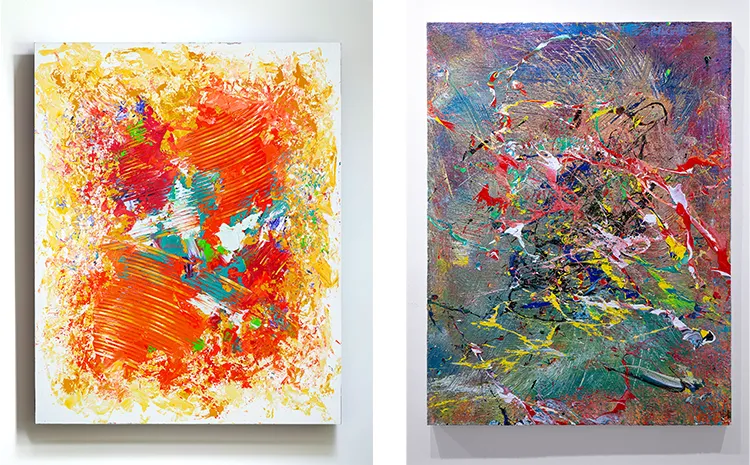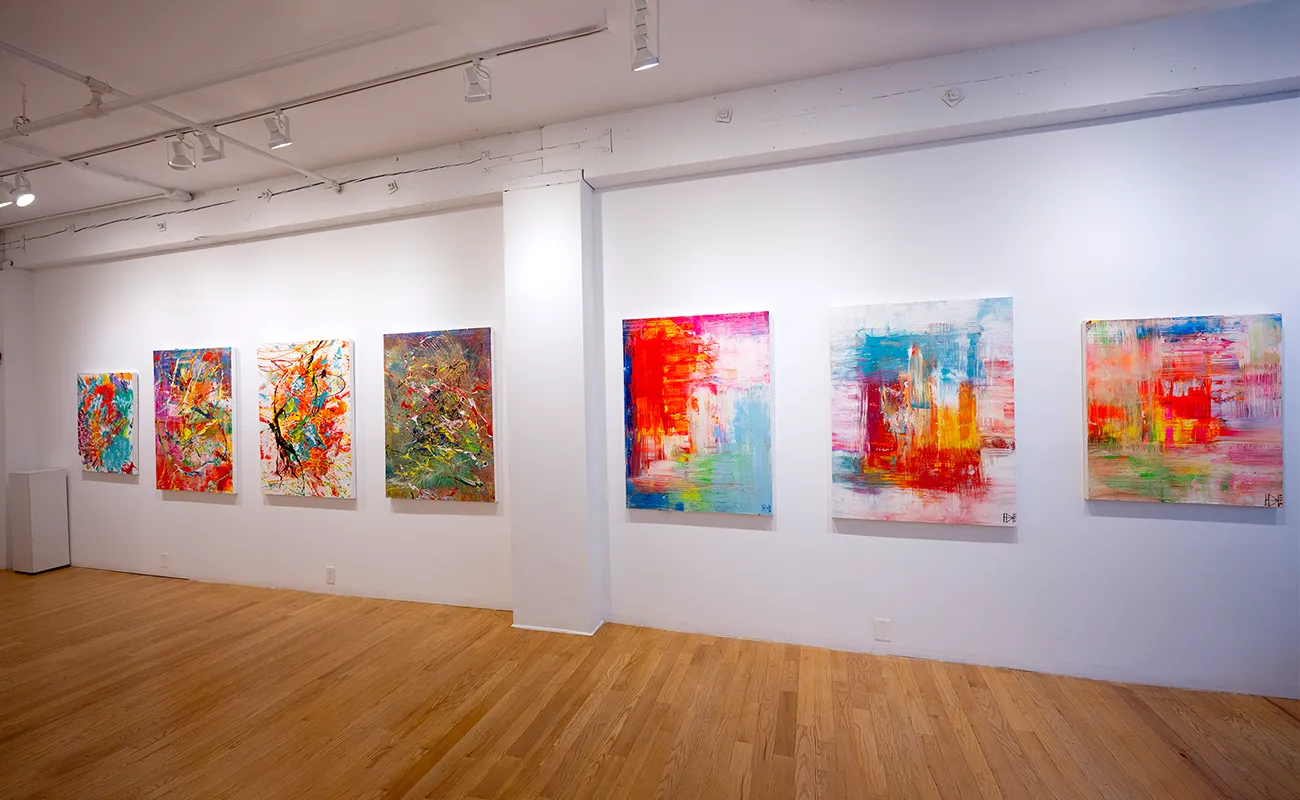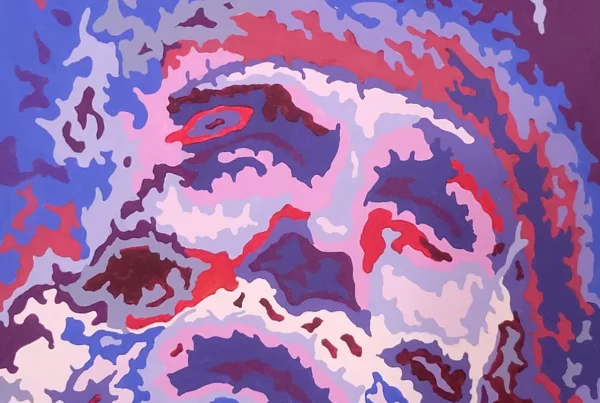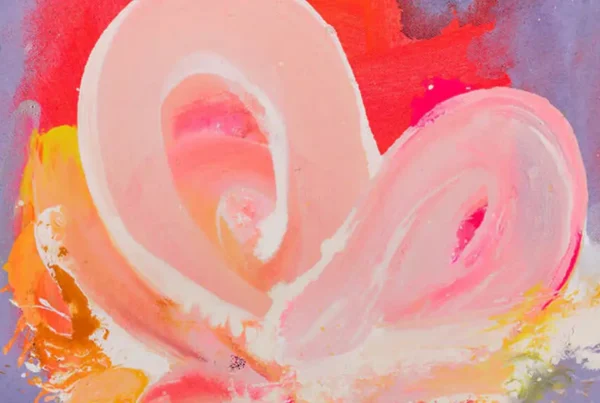“My wife urged me to try my hand at painting, and after that, I never looked back.”
A Lifelong Journey: From Photography to Artistic Evolution
David Hathaway‘s artistic career spans nearly five decades, beginning with his passion for photography. Studying photography at Pratt Institute laid the foundation for his career, and although he never formally graduated, he became a key technician, specializing in dye transfer prints at one of New York City’s premier labs. During those early years, he developed a distinct still-life portfolio, striving to establish himself as a freelancer until the economic downturn of 1990 forced him to step away from his artistic pursuits. With little choice but to sell his equipment, Hathaway moved to central New York, finding solace and work in digital retouching, an emerging field in the world of photography.
His move back to the New York City area marked a turning point as he entered into various creative avenues, including 3D visualization, serious games, and motion graphics. Hathaway eventually completed his BFA in computer arts from Mercy University, a milestone that reconnected him to his passion for photography, albeit now as a pursuit of fine art. However, when galleries showed little interest in his work, dismissing it because of their hesitance to showcase photography, Hathaway faced a deep moment of doubt. It was his wife who encouraged him to explore painting—a suggestion that ultimately transformed his artistic trajectory forever.
Inspired by his wife’s confidence in his creative vision, Hathaway decided to try painting, though he had no previous experience. Armed with acrylic paints, palette knives, and the guidance of online art tutorials, he began experimenting. Among his most notable influences was John Beckley, whose YouTube videos on abstract art captivated Hathaway. Beckley’s distinctive use of color, texture, and form profoundly impacted Hathaway’s approach, providing the inspiration he needed to cultivate his own style. After the first few attempts, painting became his primary focus, and he abandoned photography altogether, never looking back.
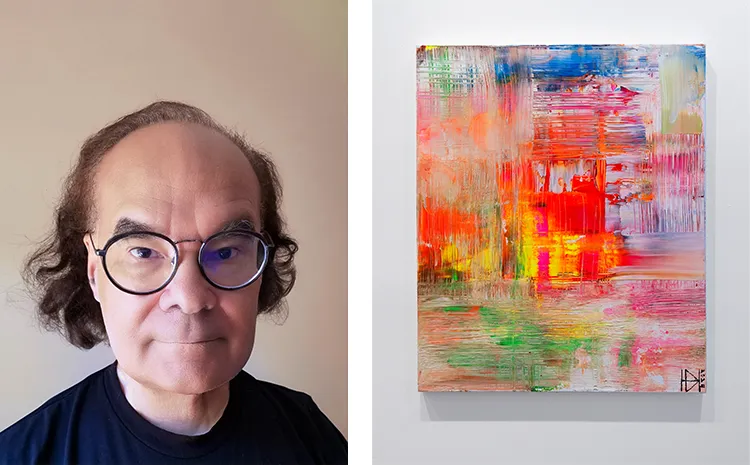
David Hathaway: A Dance of Subconscious Gestural Abstraction
David Hathaway’s work is firmly grounded in gestural abstraction, an artistic approach characterized by intuitive, expressive brushstrokes that convey emotional depth. Hathaway allows his subconscious to lead the process, finding himself in a near trance-like state when he paints. The spontaneity of his method means that he often completes multiple pieces in a single day, driven by pure instinct rather than premeditated concepts. It is only afterward, upon reflection, that he truly understands the essence of his creations—a process that reveals the raw emotions embedded in his work.
The artist’s dynamic creative process doesn’t end with the initial painting. Rather, Hathaway revisits and reworks his pieces multiple times, sometimes reimagining a work three or four times before it reaches its final state. These revisions are not mere corrections but transformative phases that allow new elements—colors, textures, or forms—to emerge. What begins as an imperfect canvas evolves into something entirely distinct, sometimes creating a new narrative from the original composition. It is through this iterative process that Hathaway’s work achieves a rich, layered quality.
Central to Hathaway’s creative philosophy is the concept of balanced asymmetry. He strives for harmony in his compositions, ensuring that every choice in color, texture, and spatial arrangement contributes to a unified whole. This pursuit of balance is both challenging and essential, requiring constant adjustments to achieve the desired resonance. When a piece finally “sings,” Hathaway knows he has reached the peak of its expressive potential. This harmony not only resonates within the individual painting but also across his larger series, creating a cohesive and powerful visual dialogue.

The Influence of Music and Artistic Vision
The environment in which Hathaway paints plays a crucial role in shaping his work. His workspace is adorned with his paintings, serving as a source of inspiration and a means of building a deeper relationship with each piece. Music also forms a vital part of his creative process—he often listens to industrial metal while painting, an unconventional choice that fuels the intensity and urgency of his work. He wonders if a switch to classical music might lead to a different outcome in his art, yet his preference for high-energy soundscapes suggests a natural alignment between the music’s power and his gestural approach.
Distractions are handled with a simple strategy—stepping away from his work until he can return fully focused. Hathaway’s ability to immerse himself in his art, achieving a tunnel vision-like concentration, allows him to channel his emotions freely onto the canvas. This undistracted state is critical for Hathaway, as it facilitates the intense, instinctive creative process necessary for his gestural abstraction.
Hathaway’s influences are diverse, ranging from the textured, layered techniques of Mark Bradford to the vibrant abstraction of Kikuo Saito. Other notable inspirations include Gerhard Richter, Albert Oehlen, Jackson Pollock, and Katharina Grosse, whose work resonates with Hathaway’s own exploration of form, color, and texture. These artists have collectively informed Hathaway’s practice, pushing him towards an abstract expression that is bold, emotive, and visually complex.
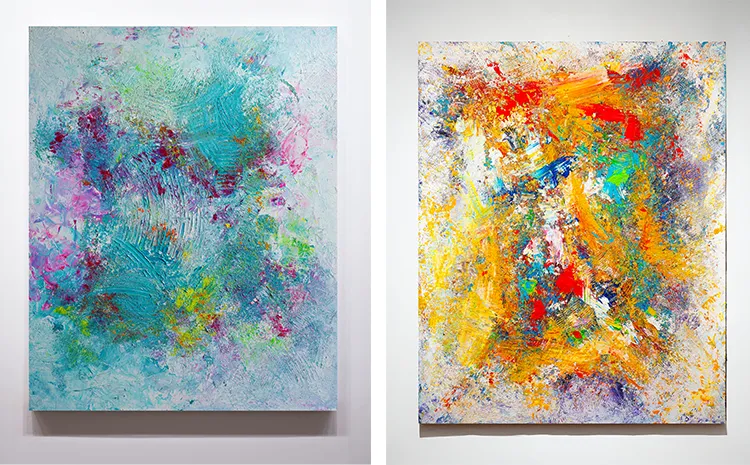
David Hathaway: Structured Anarchy and New Horizons
Among Hathaway’s most meaningful creations is his “Structured Anarchy” series—a collection that embodies his philosophy of finding order within chaos. Two paintings from this series, “Anarchy #1” and “Anarchy #3,” hold special significance for him, as they represent a dynamic interplay between contrasting emotions. “Anarchy #1” exudes a mellow and contemplative energy, while “Anarchy #3” is lively and full of kinetic force. Despite these differences, the two pieces share a cohesive texture and style, enabling them to function as a unified diptych. This contrast and complementarity reflect the duality Hathaway aims to capture in his work—the balance between tranquility and intensity.
Hathaway’s chosen medium is acrylic paint, which he has paired with oil pastels to introduce additional layers of texture and pattern to his work. His forays into mixed media have also included using corrugated cardboard, which he intentionally shreds to create unusual surfaces upon which to paint. This exploration of different textures allows Hathaway to push the boundaries of his art, incorporating elements that evoke rawness and unpredictability, further enhancing the depth and tactile quality of his abstract pieces.
“Structured Anarchy” as a series embodies Hathaway’s core artistic vision: a balance between freedom and control, chaos and structure. The gestural nature of his painting represents the anarchic side—an instinctive, almost primal engagement with the canvas. The structure emerges from Hathaway’s deliberate imposition of order, ensuring that the energy he creates is contained within an organized framework. Through recurring shapes, thoughtful color schemes, and intentional focal points, Hathaway prevents his work from descending into complete randomness. Instead, he creates compositions that, while appearing spontaneous, are meticulously balanced, resulting in works that feel both intensely expressive and harmoniously complete.
